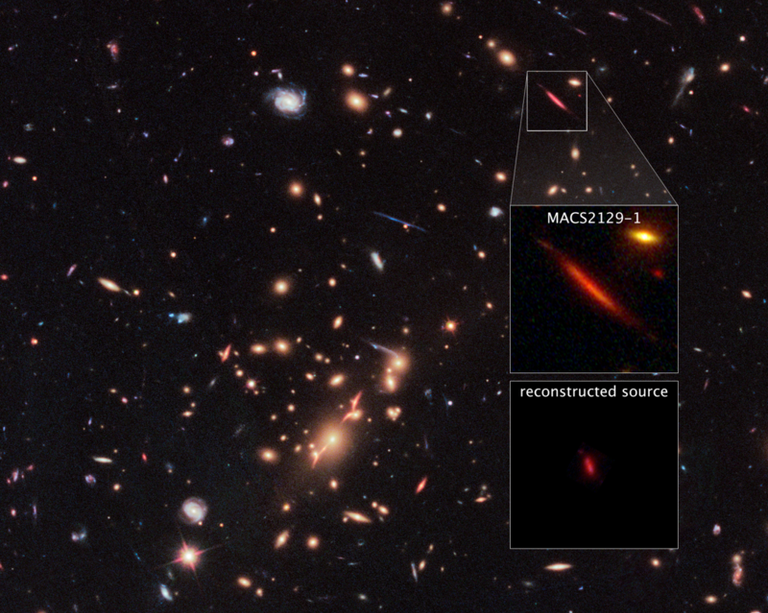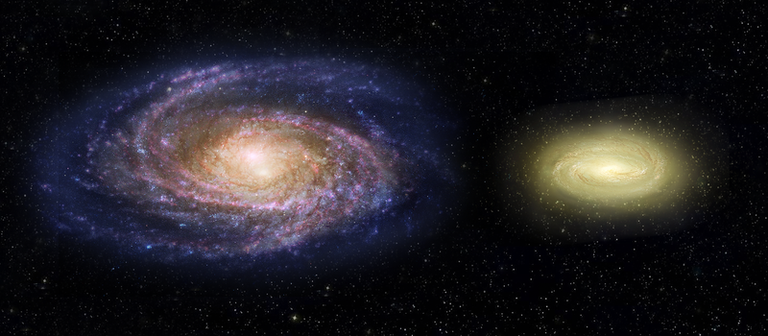When the Universe was just three billion years old, half of the most massive galaxies were extremely compact and had already exhausted their fuel for star formation. According to present theory, it is believed that they were formed in nuclear starbursts and later grew into elliptical galaxies, consuming minor companions. To prove this scientists need telescopes with resolution yet not available. However magnification from gravitational lensing offers an opportunity to see their centers.
By combining the power of gravitational lensing with capability of NASA's Hubble Telescope, astronomers found massive disk-shaped galaxy that stopped to give birth to new stars three billion years after the Big Bang. Such galaxies are called "dead" - and belong to the class of elliptical, while our active Milky Way has disk form. The finding of disk dead galaxy challenges theories of galaxy evolution.

Image: NASA, ESA, S. Toft (University of Copenhagen), M. Postman (STScI), and the CLASH team
In the top box shown massive galaxy cluster MACS J2129-0741 - gravitational lens: it magnifies, brightens and distorts much more far distant background galaxy MACS2129-1. Middle box - zoomed view. In the bottom box is a reconstructed image, based on modeling that shows what the galaxy would look like if the galaxy cluster were not present. It appears red because of red shift.
Structure of the dead galaxy is a surprise: elliptical galaxies, known before, contain older stars, while disk/spiral galaxies contain younger blue stars. Previous studies of distant dead galaxies have assumed that their structure is similar to the local elliptical galaxies they will evolve into. Now astronomers have seen a young dead disk galaxy for the first time.

Image: NASA, ESA, S. Toft (University of Copenhagen), M. Postman (STScI), and the CLASH team
Our Milky Way - left, compared with dead, disk galaxy MACS2129-1, right. Although three times as massive as the Milky Way, it is only half the size, but is spinning more than twice as fast as the Milky Way. Blue regions of the Milky Way indicate bursts of stars formation, while in the dead galaxy no new stars are born. MACS2129-1 - is dense formation from old stars and dwarf stars. And of course it is absolutely unknown whether these stars have planets.
Why this galaxy stopped forming stars is unknown. Something prevents gas clouds from cooling down into star-forming clouds.
Sources:
[1] https://www.nasa.gov/feature/goddard/2017/hubble-captures-massive-dead-disk-galaxy
[2] https://www.nature.com/nature/journal/v546/n7659/full/nature22388.html#access
Really neat post, galaxies are one of those things that just blows my mind we can even see other galaxies and even our own. Every time we learn a little bit more, there are even more questions that are opened.
Great Post
Definitely interesting.
Nice science post!
very informative post
Thanks for sharing ! I follow!
Have a look at my page, i'm astrophotographer :)